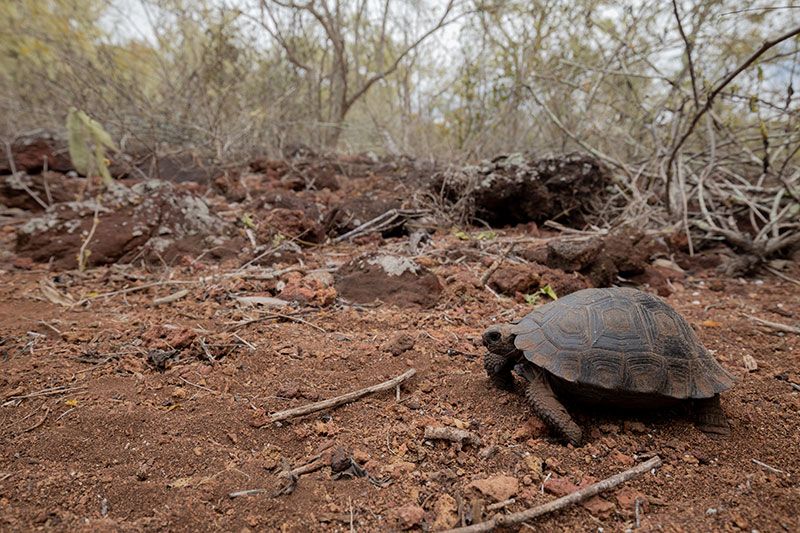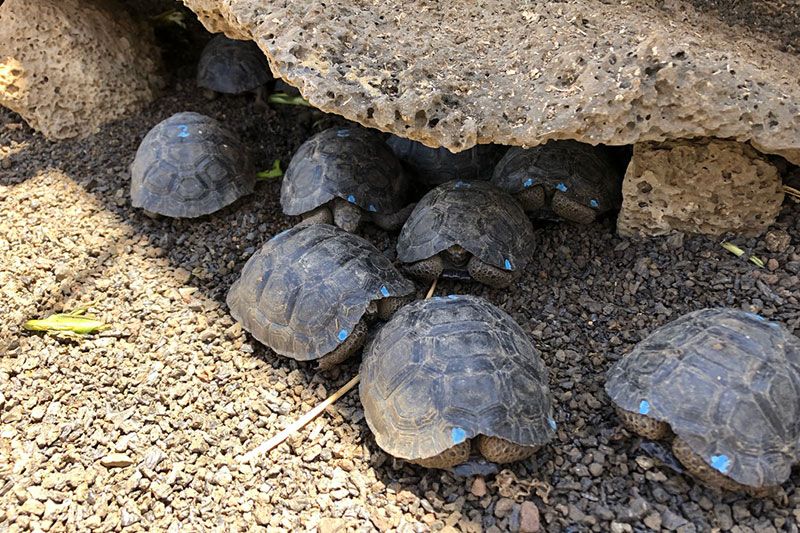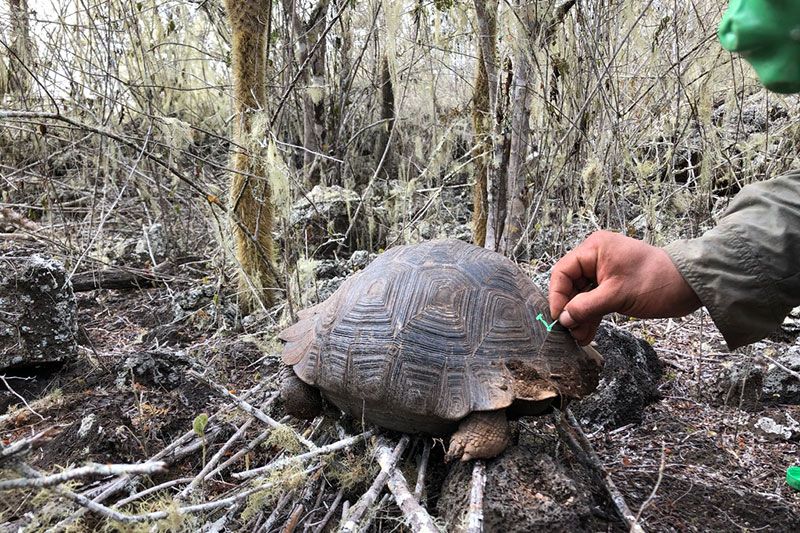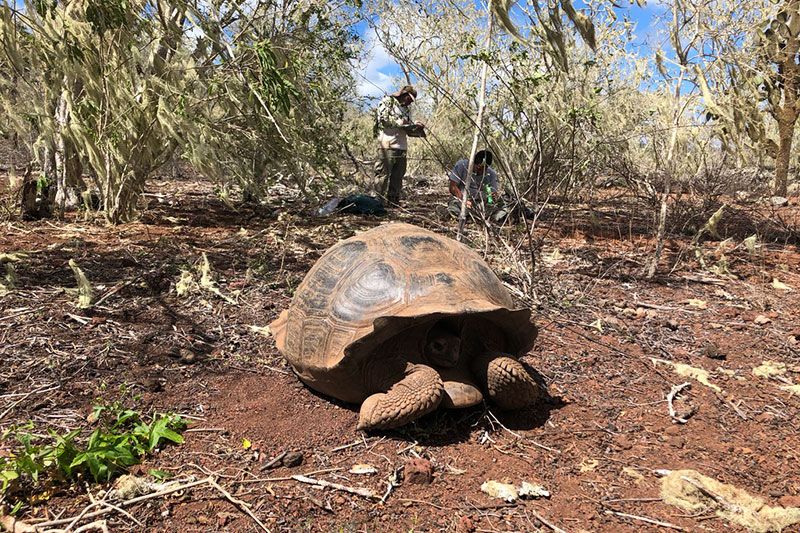Restoring the giants of the Galapagos
PTES funds supported the Cerro Fatal census and a survey of Galapagos tortoises on the surrounding farmland. Happily the results of this work have triggered a small policy shift which will have big implications for the tortoises. Previously, when tortoises wandered onto private land, they were no longer under the jurisdiction of the Galapagos National Park Directorate (GNPD). Now, thanks to the work of Wacho and his team, the GNPD can work with farmers and residents to protect the tortoises anywhere they roam. This is a significant policy shift which will really benefit the tortoises. It’s new for the park to have jurisdiction over tortoises on farmland and private land in general, but it’s important because it is where many tortoises live. Various issues, including access, will be resolved over the course of next year. Importantly, the Galapagos National Park will always take a cooperative and collaborative approach when exercising its new authority, working with the landowners and farmers to help them, as well as the tortoises.
Vulnerable giants
The Eastern Santa Cruz giant tortoise is one of fifteen species of tortoise that makes the Galapagos Islands their home. Of these, six species are listed as critically endangered by the IUCN, including the Eastern Santa Cruz tortoise. During the 18th and 19th centuries these tortoises were notoriously decimated in number by buccaneers and whalers, who exploited them for food. Luckily today they are predominantly protected from poaching, but unfortunately face other threats. Introduced animals, particularly rats, pigs and an invasive species of ant, target tortoise eggs as prey. In Santa Cruz Island, other introduced feral animals, such as goats and donkeys, destroy their habitat.

Counting Galapagos tortoises
With funds from PTES, a team from the Giant Tortoise Restoration Initiative (GTRI) completed the first ever census of the Eastern Santa Cruz tortoise. The GTRI is a programme run by the Galapagos Conservancy and the Galapagos National Park Directorate. It is led by our partner Washington (Wacho) Tapia. The count – an essential task undertaken by the team – generated the information needed to provide the Directorate with detailed information on how many animals there are, and where, in order to develop an effective management plan.
The census was one of the biggest expeditions ever undertaken in the history of Galapagos conservation. It involved 12 groups of three people each working over three weeks. The teams searched a total of 80 square kilometers of rugged terrain in adverse climatic conditions. They would set up camps across the region, and then go out each day to search for and count the tortoises, looking for tortoises in the dense and often impenetrable vegetation. Creeping vines covered the shrubs and trees, many of which were invasive species, such as blackberry and guava. But with their well-sharpened machetes and great enthusiasm, they persevered in their search for every tortoise in the area.


They counted a staggering 403 tortoises over that three week period. Nearly 50% (190) were juveniles, an excellent sign of a growing population. The final population estimate – based on their mark recapture methodology – was 564 individuals. Wacho reports that he can now, with great certainty, define the range of the Eastern Santa Cruz tortoise. It’s only 40 square kilometers, but this information is critical in knowing where they need protecting.
The hardest part of each day was dealing with the threat of invasive tropical fire ants (Solenopsis geminata), which often swarmed over the vegetation. As their name suggests, the ants, which fell on the team members as they cut back the vegetation, would bite with a vengeance. This drove the teams to work as fast as possible!
Looking after La Torta
In addition to the census, it is also critical to understand and reduce conflicts that occur because of tortoise-human interactions. On Santa Cruz the road network expands throughout the highlands. Therefore, as the tortoise population grows, returning to natural levels, interactions are also increasing.
So the team has created a map of the highlands with information about the roads, farmlands, fences and tortoises. It has also explored all areas between Puerto Ayora and a nesting zone called “La Torta” to work out the migration routes of tortoises that reach the outskirts of the main settlement in Galapagos, Puerto Ayora. This is where the animals are coming into contact with roads and urban areas, and need the most protection. All the tortoises that were found along the border between the National Park and the private farms have been fitted with a microchip. This is to monitor their migratory movements and activities.

Tropical fire ants a silent enemy
Who would think a humble ant could be powerful enough to harm a giant? The invasive tropical fire ant, that tormented the team during the census, is also a serious problem for hatchling tortoises and possibly nesting females too. The GTRI team completed a systematic control of the ants. They will keep monitoring the area to check that they don’t return.
Thank you for helping us fund this vital work to save giant tortoises in the Galapagos.
If you’d like to support this project, please donate or set up a direct debit here today:
